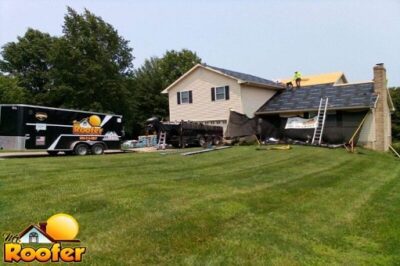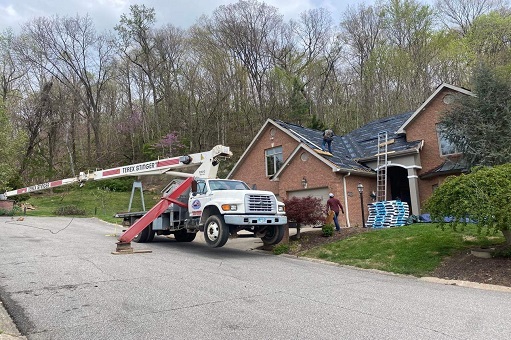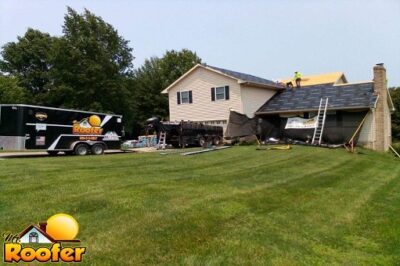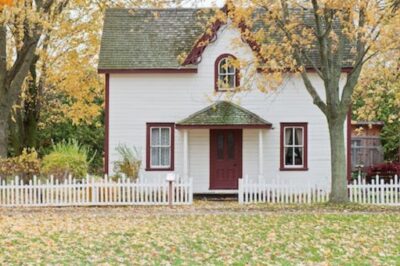Introduction to Roof Leak Repair: Understanding the Basics
Before diving into the world of roof repairs, let’s get the basics straight. A roof leak is not just an inconvenience; it marks the beginning of major home issues if not addressed promptly. Understand, water from leaks can damage the very structure of your home, leading to costly repairs down the line. At its core, fixing a roof leak involves identifying the problem areas, deciding on the best solution, and taking action to repair them. This might sound simple, but the devil lies in the details—details that involve the type of roofing materials, the age of your roof, and the severity of the leak. Catching leaks early can save you a ton of trouble. Remember, prevention is always better than cure. So, don’t wait for the rain to remind you. Regular maintenance is key to keeping those leaks at bay and your home safe.
Common Causes of Roof Leaks
Roof leaks can sneak up on you when you least expect them, turning into a major headache. But understanding their common causes can keep your home dry and your wallet happy. First off, broken or missing shingles are a prime suspect. Bad weather or just wear and tear over time can leave your roof exposed. Next, watch out for damaged flashing. This is the metal placed around objects that stick out of your roof, like chimneys or vents. If it’s cracked or broken, water can find its way in. Clogged gutters are another common villain. When leaves and debris pile up, water can’t flow away properly, causing it to back up under your shingles. Lastly, don’t ignore age. Like everything, roofs get old. Materials break down, making leaks more likely. By keeping an eye on these trouble spots, you can catch issues early and avoid the drama of a leaky roof.
Early Signs of a Potential Leak in Your Roof
Spotting a roof leak early can save you a lot of hassle and money. Look out for these warnings: Buckling or missing shingles signal your roof’s armor is weak and water might find its way in. Stains on ceilings or walls inside your home are often the first tell-tale signs that water is sneaking through. If you notice damp spots in your attic or peeling paint under roof overhangs, it’s probably not a shower bringing water inside. Check your energy bills too. A sudden spike could mean your insulation is wet and ineffective, thanks to a leaky roof. These signs don’t scream for attention but whisper. Listen closely, and you might catch a leak before it becomes a downpour.
Regular Inspection and Maintenance: Key to Preventing Leak Repair
To stop roof leaks before they start, think about inspections and maintenance as your first line of defense. You wouldn’t drive your car without regular check-ups, right? Same goes for your roof. Having a professional eyeball it once a year keeps small problems from turning into wallet-draining repairs. They’ll look for cracked or missing shingles, issues with flashing around chimneys and vents, and any spots where water likes to collect. If they find something, fixing it early can save you a ton of money and headaches down the road. Plus, this routine can add years to your roof’s life. Think of it as taking care of your home’s top hat, keeping it classy and leak-free.
Cleaning Your Gutters and Downspouts to Avoid Water Damage
Keeping your gutters and downspouts clean is a straightforward but crucial step in preventing water damage to your roof. Leaves, twigs, and debris can clog your gutters. When this happens, water can’t flow away from your house. Instead, it overflows and can get under your roof shingles or pool around your foundation. This can lead to leaks or serious water damage over time. Here’s the deal: You should clean your gutters at least twice a year, usually in the spring and fall. If you have a lot of trees near your house, you might need to do it more often. Also, check your downspouts to make sure water is flowing away from your foundation properly. If water is pooling, consider adding extensions to direct the water further away from your house. A little bit of maintenance goes a long way in keeping your roof in good shape and avoiding costly repairs down the line. Remember, it’s not just about removing the debris but also ensuring water can flow freely.
The Importance of Proper Roof Ventilation in Preventing Leaks
Good roof ventilation isn’t just a nice-to-have; it’s crucial. Here’s the deal: when your attic gets too hot or damp because of poor ventilation, it can seriously mess with your roof. This means more chances for leaks, and no one wants that. A well-ventilated roof helps balance the temperature and moisture up there, cutting down the risk of leaks big time. It’s like giving your roof a shield against the elements. Plus, it can even save you cash by making your home more energy-efficient and preventing costly damage. So, when you’re looking at keeping your roof leak-free, don’t skimp on proper ventilation. It’s a game-changer.
How to Seal Roof Penetrations and Prevent Water Intrusion
Sealing roof penetrations is a crucial step in preventing water intrusion, which is a major cause of roof leaks. Think of your roof like a shield; every hole or gap can let in water, leading to bigger problems. Here’s how you tackle it: First, identify all penetrations – these are spots where vents, pipes, or cables come through your roof. Each one is a potential leak spot. Next, choose the right sealant. For most roofs, a high-quality urethane or silicone-based sealant works best because it’s flexible and durable. Apply the sealant around each penetration, making sure you cover any gaps thoroughly. Don’t just slap it on; be precise, covering the entire area where water could enter. Also, consider installing flashing if you don’t already have it. Flashing is a thin metal sheet that redirects water away from critical areas, like where your chimney meets your roof. Remember, regular check-ups are key. Twice a year, take a look at these areas to make sure the sealant isn’t cracking or peeling away. If it is, scrape off the old stuff and apply fresh sealant. It’s a simple step, but it can save you a ton of trouble by keeping your home dry and water-free.
Choosing the Right Roofing Materials for Leak Prevention
Choosing the right roofing materials is key to keeping your home dry and leak-free. Think about it like this: Your roof is your home’s shield against rain, snow, and sun. Picking tough materials means your shield is stronger. First off, metal roofs are a solid pick. They’re tough, last a long time, and water slides right off them. Then there’s asphalt shingles, the go-to for many homes. They’re more affordable and do a decent job, but they might not be as durable as metal. For areas with lots of rain or snow, rubber roofing could be a game changer. It’s like putting a waterproof coat on your home. And let’s not forget about slate tiles. They look great and are super strong, but they can be pricey. Your choice depends on your budget, the weather in your area, and how long you want it to last. Go for quality and your roof will be a top-notch protector against leaks.
When to Call a Professional for Roof Leak Repair
When it comes to roof leak repairs, knowing when to call in a professional is key. Don’t wait until water is pouring through your ceiling. If you spot any signs of a potential leak, such as water stains on your ceiling, missing or damaged shingles on your roof, moldy smells inside your home, or debris in your downspouts, it’s time to call in the experts. Professionals have the right tools and knowledge to accurately diagnose the problem and fix it before it becomes a bigger issue. Remember, tackling roof repairs early can save you money and headaches in the long run. So, the moment you suspect a leak, get a pro on the phone.
Summary: Staying Ahead of Roof Leaks
Keeping your roof leak-free isn’t just about repairs; it’s about staying one step ahead. Think of your roof like a helmet. You wouldn’t wait for a crack to appear in your helmet before taking care of it, right? The same goes for your roof. Regular check-ups are your best defense. Here’s the deal: clean those gutters to prevent water backup, trim overhanging branches to avoid punctures, and keep an eye on your shingles for any signs of wear and tear. It’s also smart to hire a pro for an annual inspection; they know how to spot trouble you might miss. Remember, being proactive is always less costly than fixing a disaster later on.








0 Comments